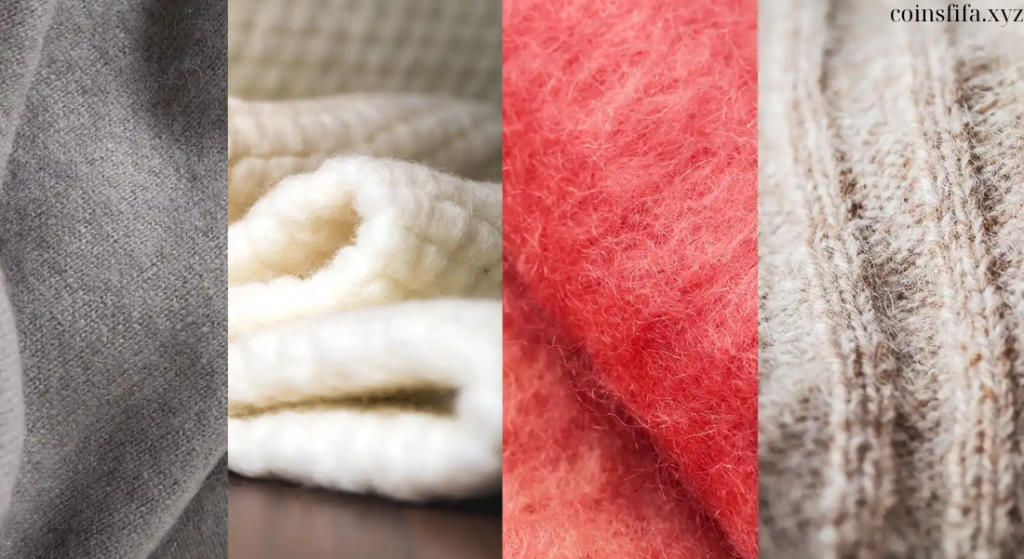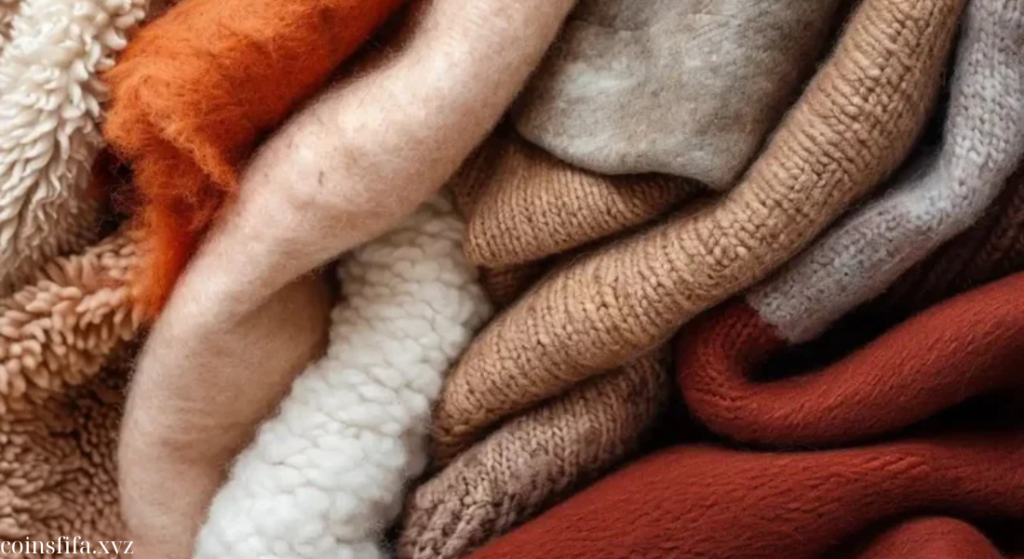When most people think of wool, they imagine a thick, itchy fabric meant only for heavy winter wear. However, wool is far more versatile than its reputation suggests. There are numerous types of wool fabrics, each offering unique qualities suited for a range of clothing and textile applications—from soft and lightweight options perfect for summer to durable and luxurious fabrics for winter garments. Wool can be breathable, moisture-wicking, and surprisingly soft, making it an ideal material year-round. In this guide, we’ll explore wool fabric types that go beyond the traditional, revealing surprising options that may change how you view this timeless material.

Table of Contents
ToggleKey Highlights
- Overview of Wool Fabric Types: A breakdown of common and unexpected wool varieties.
- Lightweight Wool Fabrics: Soft, breathable, and perfect for warm weather.
- Medium-Weight Wool Fabrics: Versatile and suitable for various garments.
- Heavyweight Wool Fabrics: Durable, warm, and ideal for winter clothing.
- Care Tips for Wool Fabrics: How to maintain the beauty and longevity of wool garments.
1. Overview of Wool Fabric Types: More Than Just Winter Wear
Wool comes from various animals, and the fiber’s characteristics depend on the breed, environment, and processing method. Here are some common and surprising wool varieties that might change how you think about this fabric:
- Merino Wool: A soft, fine wool from Merino sheep, known for its breathability and moisture-wicking properties.
- Cashmere: A luxurious wool harvested from cashmere goats, prized for its softness and lightweight warmth.
- Alpaca Wool: A hypoallergenic and silky wool, often softer and lighter than sheep’s wool.
- Mohair: Wool from the Angora goat, known for its sheen and durability.
- Gabardine Wool: A tightly woven wool fabric, commonly used in suiting and outerwear.
- Tweed: A rougher, thicker wool often used in jackets and heavy garments.
2. Lightweight Wool Fabrics: Soft, Breathable, and Ideal for Warm Weather
Merino Wool
Merino wool is one of the finest and softest types of wool, making it perfect for lightweight garments. It’s incredibly breathable and has natural moisture-wicking properties, which help regulate body temperature in both warm and cool climates. Merino wool is often used in activewear, base layers, and summer garments because it’s lightweight, comfortable, and doesn’t itch like traditional wool.
- Best Uses: Base layers, summer dresses, activewear, lightweight sweaters.
- Surprising Fact: Merino wool has natural UV protection, making it great for outdoor wear.
Tropical Wool
Tropical wool is a lightweight, loosely woven wool fabric designed specifically for warmer climates. It provides the elegance and structure of wool without the heaviness, making it ideal for summer suits and tailored garments. The open weave of tropical wool allows air to circulate, keeping you cool while maintaining a polished look.
- Best Uses: Summer suits, dresses, lightweight trousers.
- Surprising Fact: Despite being wool, tropical wool garments feel cool and airy, perfect for hot weather.
Wool Crepe
Wool crepe is a textured, lightweight wool fabric with a slightly crinkled surface. It has a beautiful drape and is often used for dresses, skirts, and blouses. Wool crepe is surprisingly soft and comfortable, making it a great option for garments that need to be lightweight yet structured.
- Best Uses: Dresses, skirts, blouses, light jackets.
- Surprising Fact: Wool crepe resists wrinkling, making it perfect for travel clothing.
3. Medium-Weight Wool Fabrics: Versatile and Suitable for Year-Round Garments
Cashmere
Cashmere is known for its luxurious softness and lightweight warmth, making it a favorite for sweaters, scarves, and other high-end garments. This wool comes from the undercoat of cashmere goats and is significantly softer and lighter than traditional wool. Cashmere is a great option for layering pieces, as it provides warmth without bulk.
- Best Uses: Sweaters, scarves, shawls, layering pieces.
- Surprising Fact: Cashmere is eight times warmer than sheep’s wool, yet much lighter.
Alpaca Wool
Alpaca wool is hypoallergenic, making it ideal for those with sensitive skin. It is softer, lighter, and warmer than traditional wool, and it comes from the fleece of alpacas. Alpaca wool is often used in sweaters, scarves, and outerwear. Its natural luster gives it a luxurious appearance, and it’s resistant to pilling.
- Best Uses: Sweaters, outerwear, scarves, shawls.
- Surprising Fact: Alpaca wool contains no lanolin, which makes it hypoallergenic and less likely to irritate the skin.
Mohair
Mohair, from the fleece of Angora goats, is another surprisingly soft and durable wool. It’s lightweight and has a natural sheen, making it an attractive option for high-end garments. Mohair’s strength and durability are matched by its ability to insulate while remaining breathable. It’s commonly blended with other fibers for added softness and shine.
- Best Uses: Sweaters, suiting, scarves, high-end apparel.
- Surprising Fact: Mohair fibers are smoother than sheep’s wool, which gives it its characteristic sheen and luxurious feel.
4. Heavyweight Wool Fabrics: Durable and Ideal for Cold Weather
Tweed
Tweed is a heavyweight wool fabric known for its durability and rugged texture. It’s often associated with classic jackets and outerwear, but it’s also used in skirts, hats, and blankets. Tweed is highly insulating, making it perfect for cold-weather garments. It’s woven in various patterns, including houndstooth and herringbone, adding a distinctive, timeless look to garments.
- Best Uses: Jackets, coats, skirts, hats.
- Surprising Fact: Tweed was originally worn by Scottish farmers and gamekeepers due to its warmth and weather resistance.
Wool Felt
Felted wool is created by compressing and matting wool fibers together, resulting in a dense, warm fabric that’s resistant to fraying. It’s commonly used for hats, coats, and decorative items like bags and home decor. Wool felt is durable, water-resistant, and provides excellent insulation, making it ideal for outdoor garments and accessories.
- Best Uses: Coats, hats, home decor, bags.
- Surprising Fact: Wool felt is often used in historical reenactment clothing because of its durability and warmth.
Gabardine Wool
Gabardine is a tightly woven wool fabric known for its durability and water resistance. Originally used in trench coats, gabardine is perfect for outerwear and suiting due to its sleek, structured appearance. The tight weave makes it both wind and water-resistant, while still maintaining the breathability of wool.
- Best Uses: Trench coats, suiting, outerwear.
- Surprising Fact: Gabardine wool was invented by Thomas Burberry in the late 1800s and was used for expedition clothing and military uniforms.
5. Care Tips for Wool Fabrics: Maintaining Quality and Longevity
Washing Wool
- Always check the care label. Many wool fabrics, especially cashmere and merino, are best hand-washed in cold water with a gentle detergent.
- For machine washing, use a gentle cycle with cold water, and place wool garments in a mesh laundry bag to prevent stretching.
Drying Wool
- Lay wool items flat to dry on a clean towel, gently reshaping them as they dry. Avoid hanging wool garments, as this can cause them to stretch out of shape.
- Never tumble dry wool, as the heat can cause shrinkage.
Ironing and Storing Wool
- Use a steam iron on the wool setting or a damp cloth between the iron and the wool fabric to prevent scorching.
- Store wool garments in a cool, dry place, preferably folded and away from direct sunlight. Use moth repellents like cedar or lavender to protect the fabric.
Conclusion
Wool is a far more diverse fabric than many people realize. From lightweight and breathable options like merino wool and tropical wool to luxurious varieties like cashmere and alpaca, wool can be used for all seasons and styles. Heavier options like tweed and gabardine offer durability and warmth, while mohair and wool crepe add elegance to high-end fashion. By understanding the different wool fabric types, you can make informed choices for your wardrobe, enjoying the surprising versatility and comfort wool has to offer.
FAQ
Is wool suitable for summer wear?
Yes, lightweight wool fabrics like merino and tropical wool are breathable and moisture-wicking, making them perfect for summer clothing.
What’s the softest type of wool?
Cashmere is considered one of the softest types of wool, followed closely by merino and alpaca wool.
How do I prevent wool from shrinking?
Always wash wool garments in cold water, either by hand or on a gentle cycle, and avoid high heat in the dryer. Lay flat to dry to prevent shrinkage.
Can wool be worn by people with sensitive skin?
Yes, hypoallergenic wool types like alpaca and some forms of merino wool are suitable for people with sensitive skin.
What’s the most durable wool fabric for outerwear?
Tweed, felted wool, and gabardine are excellent choices for durable, weather-resistant outerwear.

